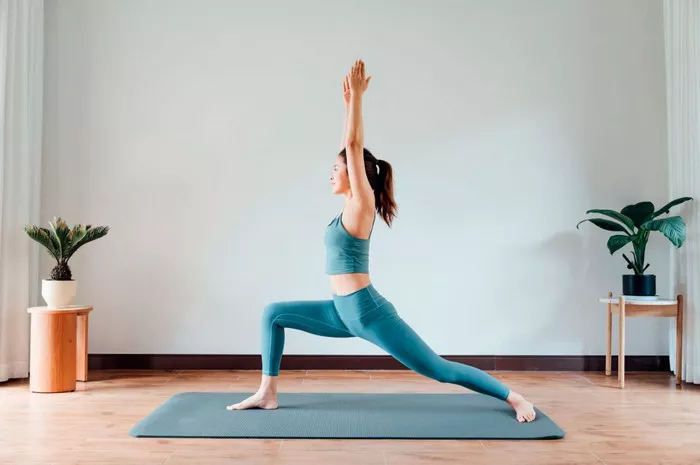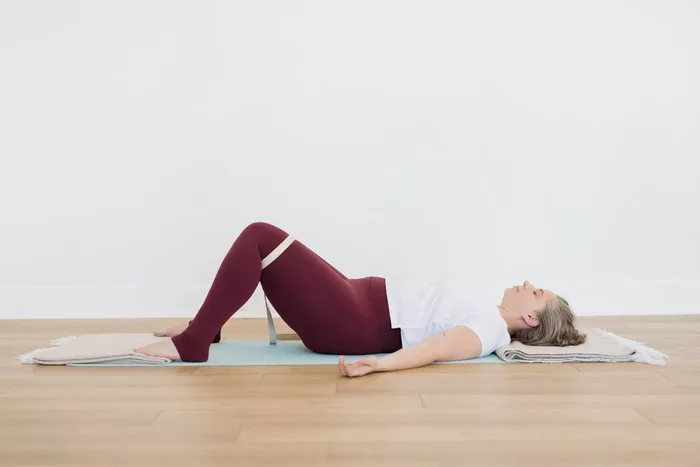Yoga, a discipline that originated in ancient India, has become a vital part of many people’s lives today. Its practice brings a myriad of benefits, including stress relief, enhanced flexibility, and improved overall health. Within the vast array of yoga postures, some poses are inspired by nature, animals, and even mythology. One such pose that has stood the test of time and continues to offer significant benefits is the Fish Pose, also known as Matsyasana.
In this article, we will explore the origins, benefits, step-by-step instructions, variations, and precautions for the Fish Pose, along with some practical tips to master it effectively. Whether you are an experienced yogi or a beginner, this guide will provide valuable insights to deepen your practice and enhance your well-being.
The Origin and Name of Fish Pose
The Fish Pose is derived from the Sanskrit word Matsya, which means fish. The name “Matsyasana” is a combination of two words: Matsya (fish) and Asana (pose or posture). The Fish Pose is said to have been practiced by great yogis and sages in ancient India to open up the heart, chest, and throat areas, creating an expanded space for energy flow.
In yoga mythology, Matsyasana is also linked to the fish god, Matsya, who is believed to be an incarnation of Lord Vishnu, one of the primary deities in Hinduism. According to the legend, Matsya rescued the ancient scriptures from a great flood, guiding them to safety. Just as the fish moves effortlessly through the water, the Matsyasana practice seeks to guide practitioners to a state of fluidity and ease within themselves, enhancing the flow of prana (life energy) and allowing for a deeper connection with the divine.
The Benefits of Fish Pose
Fish Pose is an invigorating and energizing posture that offers a variety of physical, mental, and emotional benefits. Whether you are looking to improve your posture, release tension, or boost your energy levels, Matsyasana has much to offer. Some of the key benefits include:
1. Opens the Chest and Shoulders
Fish Pose is renowned for its ability to open up the chest and shoulders. The gentle arching of the back stretches the pectoral muscles and the front of the shoulders, helping to counteract the rounded shoulders that can result from long periods of sitting. This opening of the chest promotes better posture and alignment, and it can also improve breathing capacity by allowing the lungs to expand fully.
2. Stretches the Spine
The Fish Pose is an excellent spinal stretch. The gentle backbend increases flexibility in the spine, particularly in the cervical and thoracic regions. This stretching can relieve stiffness and tension in the back, promoting better posture and preventing back pain.
3. Stimulates the Thyroid and Throat
By lifting the chest and tilting the head back in Matsyasana, the throat area is opened up, providing a gentle stretch to the thyroid and parathyroid glands. This can help stimulate these glands, which are responsible for regulating metabolism, energy levels, and hormonal balance. This pose can be especially beneficial for those experiencing thyroid imbalances.
4. Improves Flexibility in the Hips and Legs
While the main focus of Fish Pose is on the upper body, it also stretches the hips and legs. The positioning of the legs with the feet placed flat on the mat creates a stretch in the hip flexors and thighs, helping to improve lower body flexibility over time.
5. Boosts Respiratory Function
Opening the chest and lungs in Matsyasana allows for deep and full breaths, improving lung capacity and respiratory function. This is particularly beneficial for individuals with asthma or other respiratory conditions. The practice of controlled breathing while in the pose can also help calm the mind and reduce stress.
6. Relieves Tension and Stress
Fish Pose has a calming effect on the nervous system. By stretching the chest, shoulders, and spine, it releases physical tension that accumulates throughout the day, especially in areas where stress and anxiety are stored. The deep breathing in Matsyasana can also activate the parasympathetic nervous system, promoting relaxation and reducing mental stress.
7. Stimulates Digestive Organs
The arch of the back in Fish Pose also massages the digestive organs, such as the stomach, intestines, and liver. This can enhance digestion and alleviate issues like bloating or constipation. The gentle compression and release of the abdomen stimulate the flow of digestive juices, supporting overall digestive health.
8. Improves Posture
Regular practice of Fish Pose can help correct postural imbalances by strengthening the muscles of the upper back and shoulders, which play a crucial role in maintaining good posture. As the chest opens and the spine stretches, it encourages a more aligned and upright posture, reducing the likelihood of slouching.
How to Perform Fish Pose (Matsyasana)
Step 1: Begin in a Supine Position
Start by lying on your back on a yoga mat with your legs extended and your arms resting by your sides. Keep your feet together and your legs straight. Ensure that your body is relaxed and your breath is steady.
Step 2: Place Your Hands Underneath Your Hips
Bend your elbows and place your hands, palms-down, underneath your hips. This position will help support the backbend and give you a stable base as you begin to lift your chest. Your forearms should be pressing into the mat for stability.
Step 3: Lift Your Chest and Elbows
Press your elbows and forearms into the ground as you lift your chest toward the ceiling. At the same time, arch your back and begin to create a gentle bend in the spine. Try to lift the upper part of your chest higher while keeping the lower back grounded on the mat.
Step 4: Place the Crown of Your Head on the Mat
As your chest rises, tilt your head back and gently rest the crown of your head on the mat. The top of your head should be lightly touching the floor, with the weight of your body supported by your forearms and elbows. Be mindful to avoid placing too much pressure on the neck.
Step 5: Open Your Chest and Breathe Deeply
With your chest lifted and the crown of your head touching the floor, feel the expansion in your lungs and chest. Breathe deeply into your chest, filling your lungs fully with each inhalation. Hold the pose for 15-30 seconds, depending on your comfort level.
Step 6: Release and Come Out of the Pose
To release from Matsyasana, gently lift your head off the ground and lower your chest back down. Bring your arms alongside your body and rest in a neutral position, allowing the spine to relax. Take a few moments to breathe deeply and restore balance before moving on to the next posture.
Variations of Fish Pose
Fish Pose can be modified to suit different levels of flexibility and comfort. Here are a few variations that can be incorporated into your practice:
1. Supported Fish Pose (Matsyasana Variation with Props)
If you find the traditional Fish Pose challenging, you can use props to support your body. Place a block or bolster underneath your upper back to help elevate your chest and make the backbend more accessible. This variation is especially helpful for beginners or those with neck or back issues.
2. Reclined Fish Pose (Restorative Matsyasana)
For a restorative variation, lie on your back with a cushion or block placed under your shoulder blades, allowing your chest to open naturally. This version can be held for longer periods, promoting relaxation and deep release of tension. This is an excellent option if you are looking for a gentler approach to the pose.
3. Fish Pose with Legs Extended
For an added challenge, you can keep your legs straight and extend them out in front of you while performing Fish Pose. This variation further stretches the legs and requires greater engagement of the core to maintain balance.
4. Fish Pose with Leg Positioning (Cross-legged or Bound)
In this variation, you can cross your legs at the ankles or bind them together to create an additional stretch. This version is best suited for advanced practitioners who want to deepen their practice.
Precautions and Contraindications
While Fish Pose is a generally safe and beneficial posture, there are a few precautions to keep in mind:
Neck Issues: If you have neck problems, proceed with caution when lowering the head to the mat. Avoid putting excessive weight on the neck, and opt for a supported variation of the pose if needed.
Back Problems: Those with a history of back injuries should be cautious about attempting deep backbends like Fish Pose. Always practice with proper alignment and avoid overstretching.
Pregnancy: Pregnant practitioners should avoid performing Fish Pose in the early stages of pregnancy, particularly if it causes discomfort in the abdomen. Consult with a healthcare provider before attempting this posture.
Heart Conditions: If you have a heart condition, it’s essential to consult with a doctor before performing Fish Pose. The deep backbend may increase pressure on the heart.
Conclusion
The Fish Pose, or Matsyasana, is a powerful yoga posture that offers numerous physical, mental, and emotional benefits. Its ability to open the chest, stretch the spine, and promote relaxation makes it an invaluable addition to any yoga practice. By understanding the origins, benefits, and techniques of Fish Pose, you can enhance your yoga journey and enjoy the many rewards this pose has to offer. Whether you are looking to improve your posture, release tension, or stimulate your respiratory system, Matsyasana can help you achieve a greater sense of balance, health, and well-being.
As with any yoga pose, it is important to practice with mindfulness and respect for your body. Always listen to your body’s signals, and don’t hesitate to modify the pose if needed to suit your level of comfort. Happy practicing!
Related Topics:

























